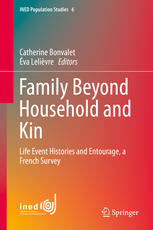

Most ebook files are in PDF format, so you can easily read them using various software such as Foxit Reader or directly on the Google Chrome browser.
Some ebook files are released by publishers in other formats such as .awz, .mobi, .epub, .fb2, etc. You may need to install specific software to read these formats on mobile/PC, such as Calibre.
Please read the tutorial at this link: https://ebookbell.com/faq
We offer FREE conversion to the popular formats you request; however, this may take some time. Therefore, right after payment, please email us, and we will try to provide the service as quickly as possible.
For some exceptional file formats or broken links (if any), please refrain from opening any disputes. Instead, email us first, and we will try to assist within a maximum of 6 hours.
EbookBell Team

4.7
106 reviewsThis book analyzes the family and residential trajectories of men and women across the twentieth century, which are placed in a long-term generational perspective and in the historical context where they played out. It brings together a set of studies based on data from the Biographies et Entourage (Life Event Histories and Entourage) survey conducted by the Institut National d’Etudes Démographiques (INED) on a representative sample of nearly 3,000 residents of the Paris region born between 1930 and 1950. Inside, readers will discover an insightful analysis of the family that moves away from such traditional concepts as the household or main residence and proposes new ones like the entourage and the residential system. This innovative approach to the family network describes an affective and residential proximity that takes into account the relatives and close friends who have played or continue to play a role in an individual's life. The book first presents a detailed analysis of the Biographies et Entourage survey respondents' parental universe and proposes a practical approach to the notion of parenthood that reveals the family and non-family resources available to individuals. Next, it describes the evolution of the respondents' family networks, both in and beyond the household, and details how these family circles shape their subjective judgments during childhood, adolescence, and adult life. Coverage then goes on to examine the family ties of older adults, the role of grandparents and step-families, the importance of family spaces including often frequented places, and inter-generational family solidarity. Families extend well beyond the walls of the home. Interpersonal relations are constructed throughout the life course and in all the settings where they play out. This book takes this new family reality into account and traces its dynamics across time and space. It provides essential tools for researchers looking to conduct life event history surveys and to develop innovative areas of research in the social sciences.